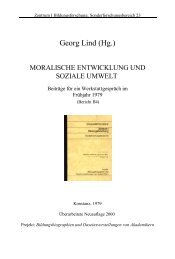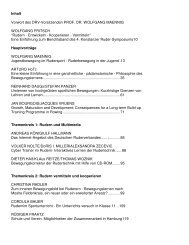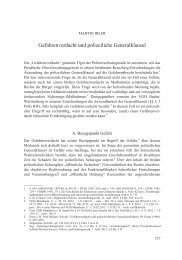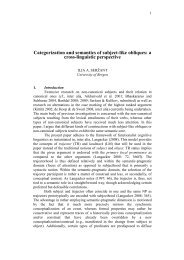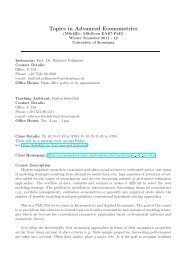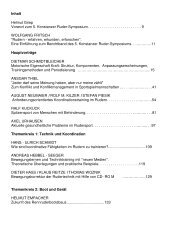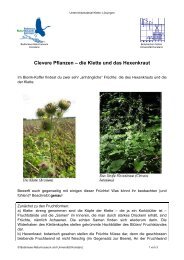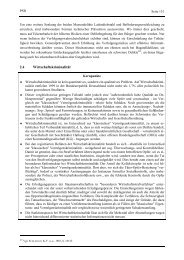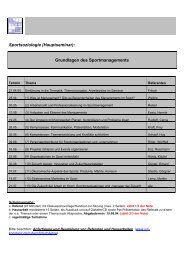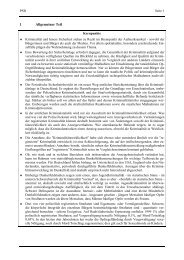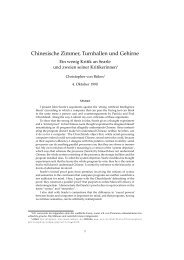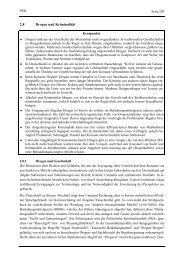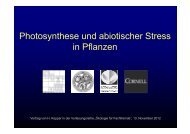Book of Abstracts Book of Abstracts - Universität Konstanz
Book of Abstracts Book of Abstracts - Universität Konstanz
Book of Abstracts Book of Abstracts - Universität Konstanz
You also want an ePaper? Increase the reach of your titles
YUMPU automatically turns print PDFs into web optimized ePapers that Google loves.
A - 20<br />
Decay behaviour <strong>of</strong> dimer ions: kinetic energy distributions and 1/t law<br />
J. Fedor 1 , K. Głuch 2 , S. Matt-Leubner 1 , O. Echt 3 , P. Scheier 1 , F. Hagelberg 4 , K. Hansen 5 , J. U. Andersen 6 ,<br />
T. D. Märk 1<br />
1 Institute for Ion Physics, Innsbruck University, Technikerstrasse 25, A-6020 Innsbruck, Austria<br />
2 Institute <strong>of</strong> Mathematics, Physics and Informatics, Maria Curie-Skłodowska University, Lublin 20-031,<br />
Poland<br />
3 Dept. <strong>of</strong> Physics, University <strong>of</strong> New Hampshire, Durham, NH 03824, USA<br />
4 Dept. <strong>of</strong> Physics, Atmospheric Sciences, and General Science, Jackson State University, Jackson, MS<br />
39217, USA<br />
5 Department <strong>of</strong> Physics, Gothenburg University, SE-41296 Gothenburg, Sweden<br />
6 Institute <strong>of</strong> Physics and Astronomy, University <strong>of</strong> Aarhus, DK-8000 Aarhus, Denmark.<br />
There exists a plethora <strong>of</strong> data on metastable decay <strong>of</strong> large cluster ions. For instance, the<br />
analysis <strong>of</strong> the kinetic energy distributions <strong>of</strong> fragment ions has led to the evaluation <strong>of</strong> their<br />
binding energies [1] and the time dependence <strong>of</strong> the decay intensity has been shown to obey a<br />
powerlaw [2]. These decays have been successfully described with statistical theories.<br />
Dimers represent the system where the degree <strong>of</strong> randomization required for thermal statistical<br />
treatment is not possible. Experimental findings on dimer ions however show that they can have<br />
decay characteristics resembling those <strong>of</strong> the large clusters.<br />
Here we present the measurements <strong>of</strong> the kinetic energy release distributions <strong>of</strong> the rare gas<br />
dimer anions (Ne2 + , Ar2 + , Kr2 + , Xe2 + ) using a three sector field mass spectrometer, as well as the<br />
measurements <strong>of</strong> decay intensity time dependence for the dissociation <strong>of</strong> the metal dimer anions<br />
(Cu2 - , Ag2 - ) obtained on the ELISA storage ring in Aarhus. The decay behaviour has been<br />
successfully explained either by the metastable electronic transitions in case <strong>of</strong> rare gases or by<br />
the tunneling through the high angular momentum barrier in the metal anions. The quasicontinuum<br />
<strong>of</strong> rotational states in the later case is sufficiently dense to lead to a 1/t law.<br />
References<br />
[1] K. Gluch, S. Matt-Leubner, O. Echt, R. Deng, J.U. Andersen, P. Scheier and T.D. Märk, Chem.<br />
Phys. Lett. 385 449 (2004)<br />
[2] K.Hansen, J.U.Andersen, P.Hvelplund, S.P.Møller, U.V.Pedersen and V.V.Petrunin,<br />
Phys.Rev.Lett. 87 123401 (2001)<br />
129



